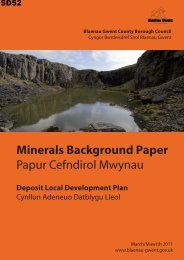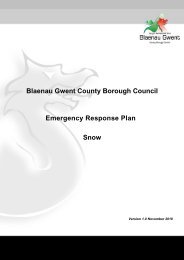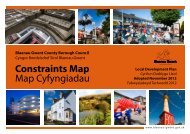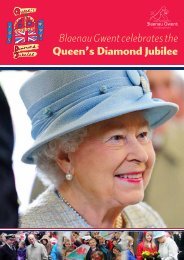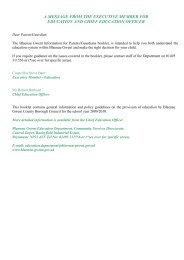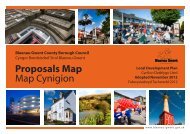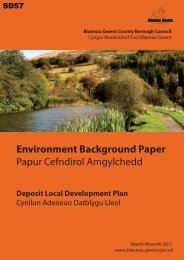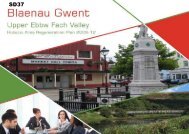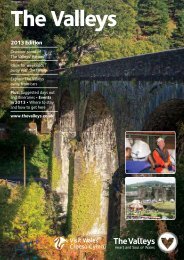Planning Policy Wales - Brecon Beacons National Park
Planning Policy Wales - Brecon Beacons National Park
Planning Policy Wales - Brecon Beacons National Park
You also want an ePaper? Increase the reach of your titles
YUMPU automatically turns print PDFs into web optimized ePapers that Google loves.
3.4.4 Where it is not clear from a planning application that provision for everyone is being<br />
achieved, it will be preferable to resolve the issue through negotiation. If there is a clear planning<br />
need it may be appropriate to impose a condition 23 to ensure adequate accessibility for all.<br />
3.4.5 Historic buildings can present particular accessibility difficulties 24 . The provision of access<br />
suitable for all should be encouraged wherever the installation of such access would not unduly<br />
affect the special character of an historic building. When a new extension is designed for a building<br />
of special architectural or historic interest it should be fully accessible. Access audits may be useful<br />
in assessing the accessibility of historic buildings.<br />
25 26<br />
3.5 Control of outdoor advertisements<br />
3.5.1 The statutory provisions enable local planning authorities to control the display of<br />
advertisements when it is justified, in the interests of public safety and amenity. The control regime<br />
does not enable the authority to regulate the subject-matter of any advertisement. The test in<br />
assessing an advertisement’s impact on public safety is whether the advertisement itself, or the exact<br />
location proposed for its display, is likely to be so distracting or confusing that it creates a hazard<br />
to, or endangers, people in the vicinity who are taking reasonable care for their own and others’<br />
safety.<br />
3.5.2 The test in considering an advertisement’s impact on amenity is whether it will adversely<br />
affect the appearance of the building, or of the immediate neighbourhood, where it is to be<br />
displayed. Local planning authorities should therefore consider the local characteristics of the<br />
neighbourhood, including its scenic, historic, architectural or cultural features. Because assessment<br />
of these factors may appear to involve some subjective judgement, authorities should be consistent in<br />
their assessment of visual impact in similar or comparable neighbourhoods or surroundings.<br />
3.5.3 No advertisement sign should be displayed without the consent of the landowner, and it is<br />
an offence to erect or paint signs on any part of a public highway 27 . Unless applicants are able<br />
to demonstrate prior highway authority authorisation for the proposed sign(s), then applications to<br />
display advertisements on (or overhanging) highway land should be refused automatically.<br />
3.5.4 Revised guidance on the criteria for brown and white tourist signing was issued in 1996 28 .<br />
Applicants requiring highway signs, for sites that meet these criteria, should apply to the appropriate<br />
highway authority.<br />
3.6 <strong>Planning</strong> conditions<br />
3.6.1 Conditions on a planning permission can enable many development proposals to proceed<br />
where it would otherwise be necessary to refuse planning permission. The proper use of conditions<br />
can improve the quality of development and enhance public confidence in the outputs of the<br />
planning system 29 .<br />
<strong>Planning</strong> <strong>Policy</strong> <strong>Wales</strong> Edition 3 - July 2010 - Chapter 3 Making and Enforcing <strong>Planning</strong> Decisions<br />
33


